Suzuki GSX1100 Katana
With Ian Falloon
Until the mid 1970s style wasn’t considered a priority in motorcycle design. Street motorcycles gradually evolved as form followed function and, apart from a few factory café racers, all motorcycles charted a fairly generic path.
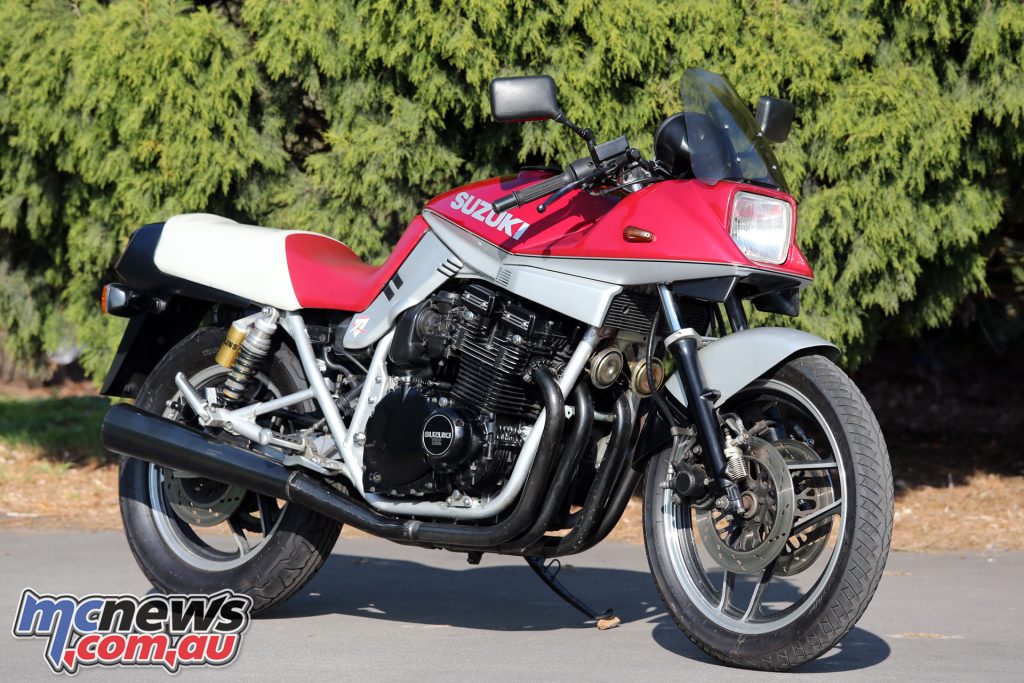
This involved an upright riding position and dual seat, much like many of today’s naked bikes. BMW changed that with their R 90 S of 1973, but although BMW was the first to officially engage a stylist, the R 90 S was actually created in house.
Outside designers weren’t really considered until Suzuki embarked on their Katana in 1979 and it was no coincidence that Suzuki selected the German company Target Design to draw up their Katana. Heading Target Design was none other than Hans A. Muth, also responsible for both the BMW R 90 S and the later R 100 RS.
Muth and fellow Target Design directors Hans Georg Kasten and Jan Olof Fellström presented Suzuki with a radical design created through wind tunnel testing. The rider and motorcycle were incorporated as a complete aerodynamic package, with the fairing and fuel tank flowing air over and around the rider.
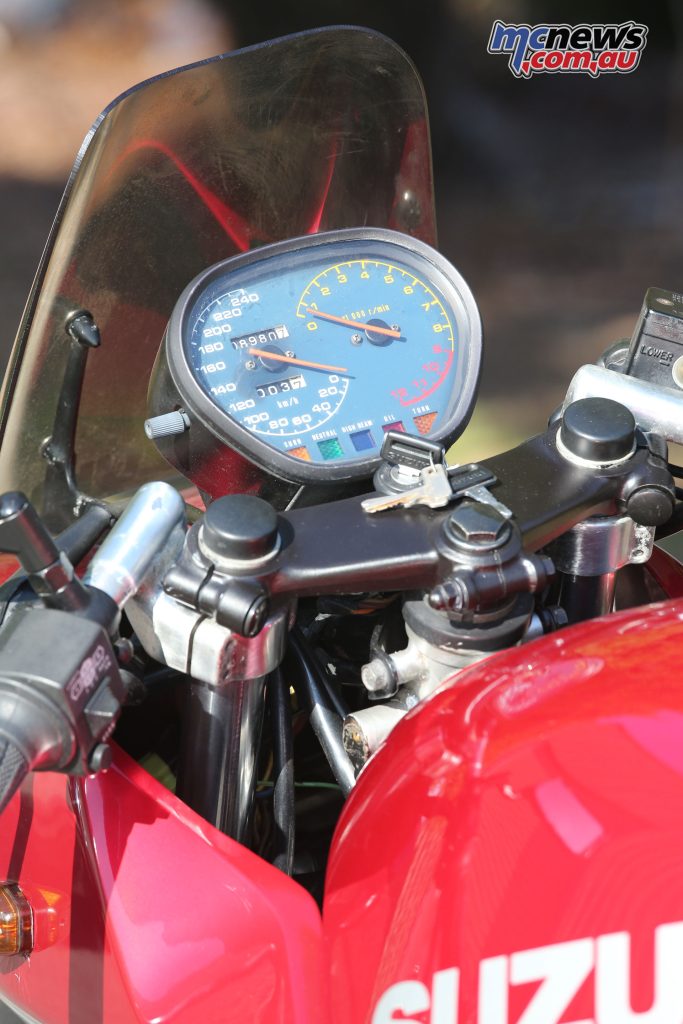
The first prototype appeared in April 1980, with an official unveiling a few months later at the Cologne show. To everyone’s surprise Suzuki announced the Katana (named after a Samurai sword) would go into production during 1981, and so it did, for the 1982 Model Year.
Compared to any other motorcycle available in 1982 the Katana’s styling was radical and opinion was polarised. There was no halfway house with the Katana; you either loved it or loathed it. And while it looked space age, the technology underneath the swoopy bodywork was far from ground-breaking.
At a time when other manufacturers were incorporating liquid-cooling, rising rate single shock rear suspension, and experimenting with 16-inch front wheels, the 1100 Katana harked back to the past.
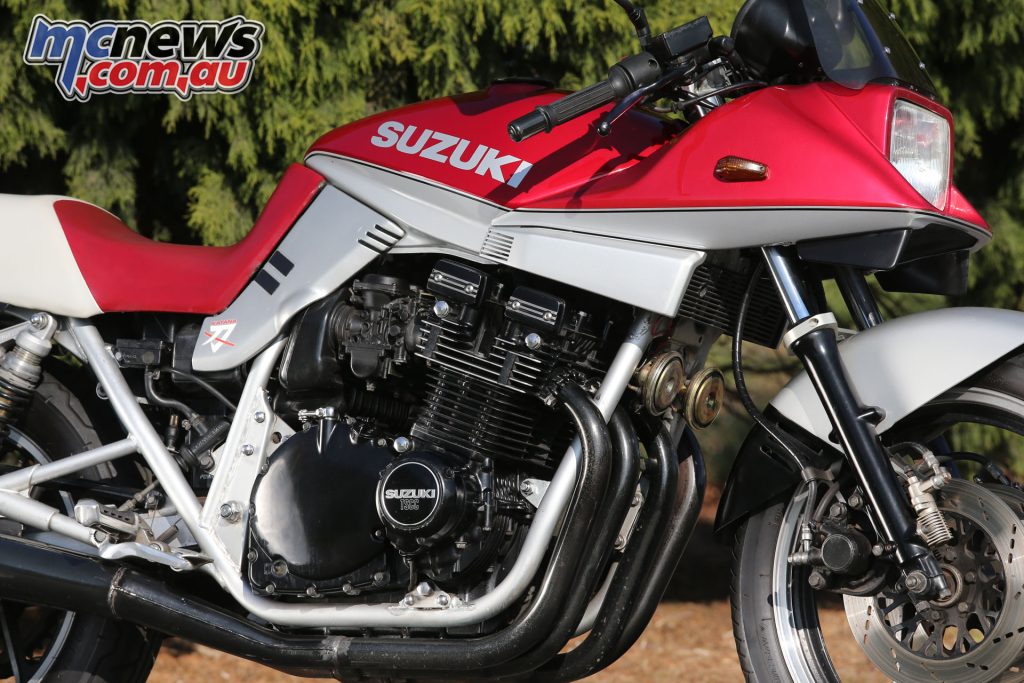
The 1074 cc four-cylinder engine may have had double overhead camshafts, four valves per cylinder, and Suzuki’s TSCC (Twin Swirl Combustion Chamber) but this air-cooled donk was very much an evolution of an earlier design.
This didn’t stop it producing a class-leading 111 horsepower at 8,500 rpm making the Katana the most powerful production motorcycle available.
Unfortunately, the chassis lagged behind the engine as beneath the style was a stock GSX 1100 Suzuki, complete with twin shock rear end, skinny front forks (albeit with trendy hydraulic anti-dive), and a 19-inch front wheel.
The wheelbase stretched 1,520 mm and the weight was a considerable 232 kg. As the alternator and ignition were hung on the outside of the crank the engine was extremely wide and needed to be placed high in the tubular steel cradle frame. Long, wide, heavy and with a high centre of gravity the 1100 Katana was no lithe back road scratcher.
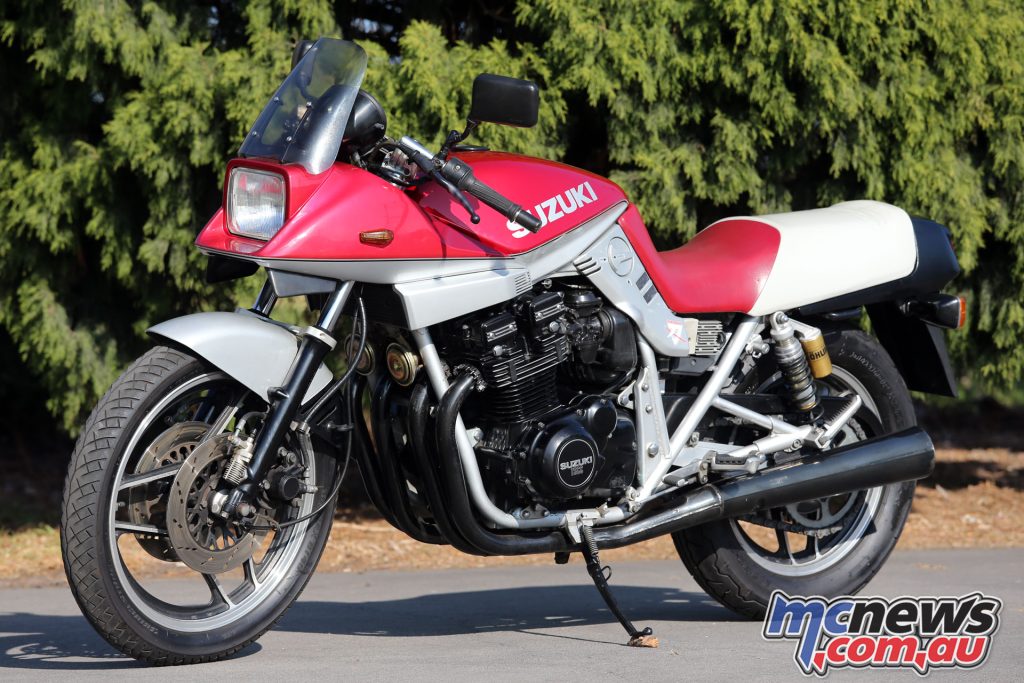
The 1100 Katana was one of the last Japanese bikes built to the old formula of an engine massively overpowering the chassis. It may have been fast but my vivid experience of testing the top speed of a new 1982 wire-wheeled 1100 Katana on a deserted Victorian country road was horrifying.
Here was a bike certainly capable of more than 230 km/h but at 200 km/h it was seemingly out of control, weaving terrifyingly over two lanes. Although the Katana has now earned a cult status, even when it was released it was a flawed dinosaur.
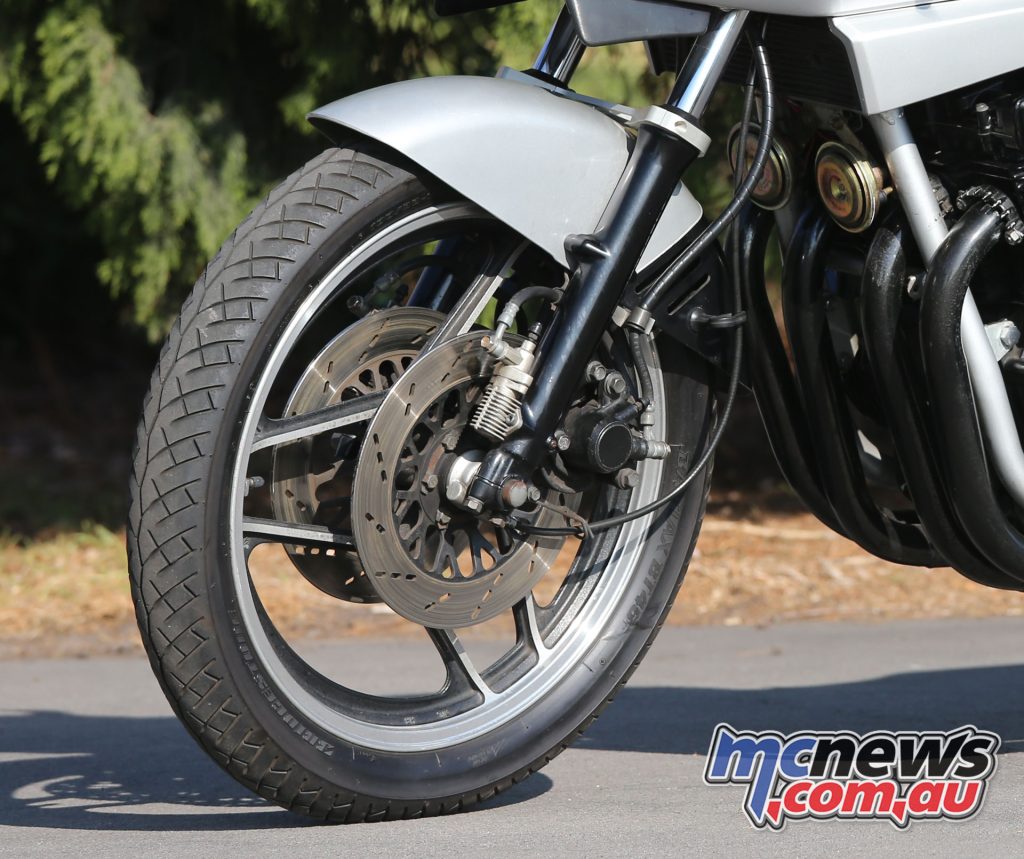
Style may have predominated over function but that hasn’t diminished its appeal. Thirty years on the Katana remains a tribute to an era when motorcycle manufacturers were prepared to stretch the boundaries, unleashing outlandish machines on an unsuspecting public without any guarantee of commercial success. The Katana didn’t sell in vast quantities, but it is now considered one of the most memorable Suzuki’s of the 1980s.
Five facts about Suzuki’s Katana
- The GSX 1100S Katana was offered with a wire model option in Australia, primarily for production racing as the wheels were a little lighter and the rear was an 18 inch with a larger range of tyres available.
- In 1983 the upper limit for racing in all Australian classes was set at 1000 cc so Suzuki Australia imported some Canadian spec bikes that would comply. The only Katanas with smooth bore carbs as standard, they were ridden in the Arai 500 by Neil Chivas, Rod Cox and Rob Toomey but all retired.
- Due to his long association with the Suzuki factory Rod Coleman the NZ importer was able to get a higher specification Katana than Australia (with E-27 cams and black exhausts)
- Although the GSX1100S Katana wasn’t sold in Australia after 1984 it was popular in Japan for many years. A 1982 spec 1100 Katana was available there until 1987, with a special anniversary version released in 1990 to celebrate Suzuki’s 70 years.
- The final Katanas were the GSX250S, available only in 1991 and 1992, and GSX400S of 1992 and 1993. These were faithful copies of the original but with modern liquid-cooled four-cylinder engines.























